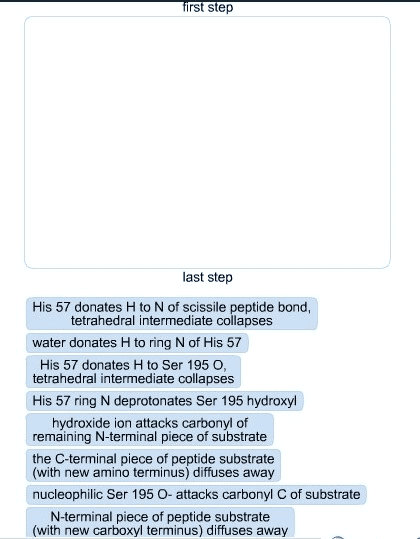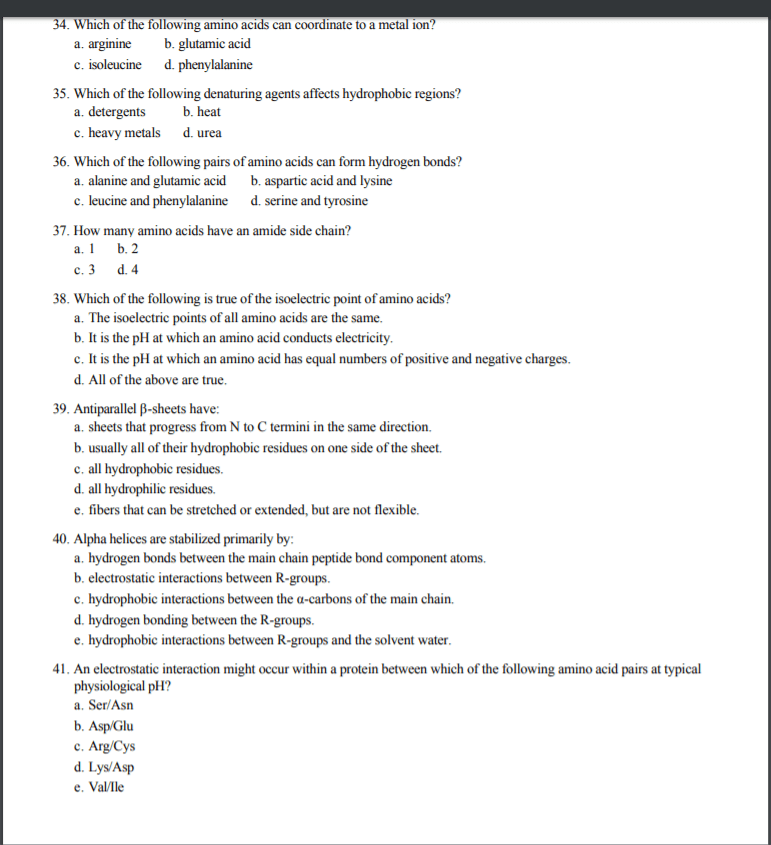CHEM 3050 Lecture Notes - Lecture 30: Scissile Bond, Enzyme Catalysis, Tetrahedral Carbonyl Addition Compound

CHEM 3050
Lecture 30
Chymotrypsin Mechanism
1. His extracts the Hydrogen ion (proton) from Ser to
make it more nucleophilic.
▪ This is a covalent catalysis
▪ His is stabilized by Asp (His acts as a base
catalyst)
• Because it is accepting a proton from
Serine
2. Oxygen atom (O atom) from Ser attacks carbonyl
of the peptide bond (bond b/t amino acids)
▪ Carbonyl C is now a tetrahedral
intermediate
3. His donates the Hydrogen ion (proton) to the
Nitrogen (N) of the scissile bond
▪ His acts as an acid catalyst
4. Bond cleaves and the rest of the peptide bond is
covalently bonded to Ser.
5. Water then donates the proton to His
▪ His acts an acid catalyst
find more resources at oneclass.com
find more resources at oneclass.com



